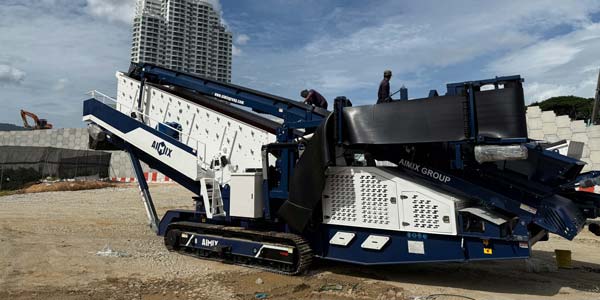


Discover how shipping costs, timelines, and after-sales support impact the final price of local vs. imported track crushers.
Choosing between a locally-manufactured track crusher and an imported one is a decision fraught with financial, operational, and logistical implications. While price tags often dominate the early stages of comparison, the deeper cost structures—including shipping, customs duties, lead times, and post-sale service—wield profound influence over the actual cost of ownership. Understanding how shipping and associated factors reshape the final price can enable more rational procurement strategies and minimize unpleasant financial surprises. In this article, we dissect the true cost dynamics that differentiate local and imported track crusher.
Imported track crushers necessitate extensive logistical planning and incur substantial transportation costs. Sea freight charges, inland haulage, handling fees, and port congestion surcharges accumulate rapidly. Furthermore, freight insurance is indispensable, safeguarding against losses during transit but adding another layer to the expense. In contrast, locally-manufactured track concrete crusher for sale benefit from abbreviated supply chains, significantly reducing transportation outlays and mitigating insurance requirements.
The variability of shipping routes and seasonal freight rate fluctuations also introduce unpredictability. For example, peak shipping seasons can inflate freight costs by as much as 30%, radically altering the expected final invoice. Such volatility demands careful timing and contingency budgeting when opting for imported equipment.
Customs clearance procedures impose additional, often underappreciated, financial burdens. Duties and tariffs on heavy machinery can range from 5% to 25%, depending on trade agreements and classifications under the Harmonized System (HS) codes. Compliance with complex documentation requirements—such as certificates of origin, inspection certificates, and specialized permits—further compounds administrative expenses.
For domestic procurement, these layers of bureaucracy are effectively bypassed. The buyer avoids both the direct financial impact of import duties and the indirect costs associated with lengthy clearance times and potential documentation errors.
When sourcing from abroad, lead times are influenced by production backlogs, shipping schedules, port delays, and customs inspections. A nominal eight-week delivery window can easily extend to twelve or more weeks under adverse conditions. Such delays not only defer the commencement of operations but may also trigger penalty clauses in contracts or escalate labor and equipment standby costs.
Locally-manufactured crushers offer enhanced predictability. Shorter transport distances and streamlined handover processes ensure greater adherence to project timelines, reducing exposure to financial and reputational risks associated with project overruns.
Post-sale service constitutes an often-overlooked dimension of total ownership cost. For imported track crushers, sourcing spare parts can become a protracted affair, particularly if proprietary components are involved. Extended downtimes can erode productivity and, by extension, profitability.
Local suppliers typically maintain parts inventories regionally, enabling swift repairs and maintenance interventions. This accessibility translates into higher machine uptime, optimizing operational efficiency and safeguarding revenue streams. In industries where time is capital, responsive support infrastructure becomes invaluable.
It is tempting to anchor procurement decisions solely on initial capital outlay, particularly when imported units present attractive price points. However, a comprehensive cost-benefit analysis must integrate lifecycle considerations, including shipping expenses, maintenance logistics, parts accessibility, and resale value.
Total Cost of Ownership (TCO) modeling provides a structured approach to these assessments. By simulating operational scenarios over the expected lifespan of the equipment, purchasers can discern the true financial footprint of each alternative, often revealing that the marginally higher upfront cost of local machinery yields superior economic returns.
Local equipment is often pre-certified to meet national regulatory standards concerning emissions, noise levels, and safety. Imported crushers may require retrofitting or certification adjustments, introducing unplanned expenses and procedural hurdles. Moreover, the environmental footprint associated with long-distance shipping—particularly carbon emissions—carries reputational and regulatory implications that forward-thinking organizations must increasingly account for.
By favoring local manufacturing, businesses can both streamline regulatory compliance and bolster their sustainability credentials, aligning operational practices with broader corporate responsibility goals.
